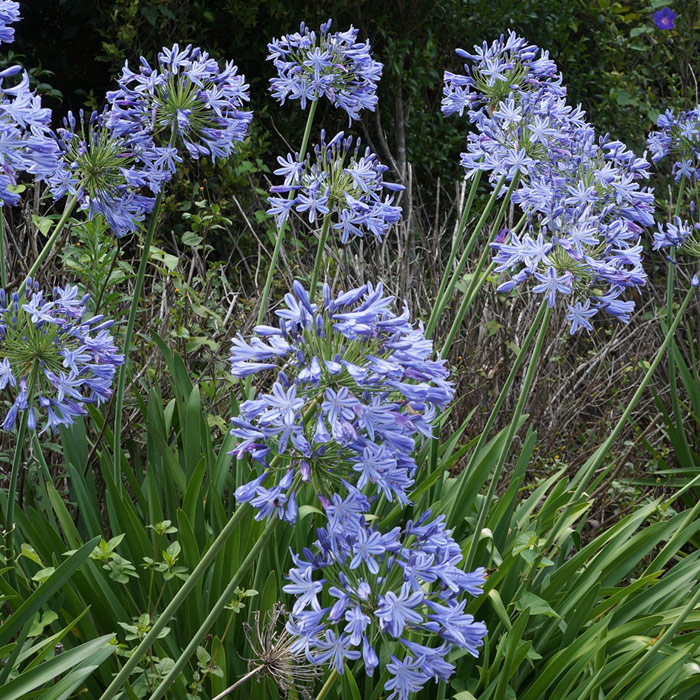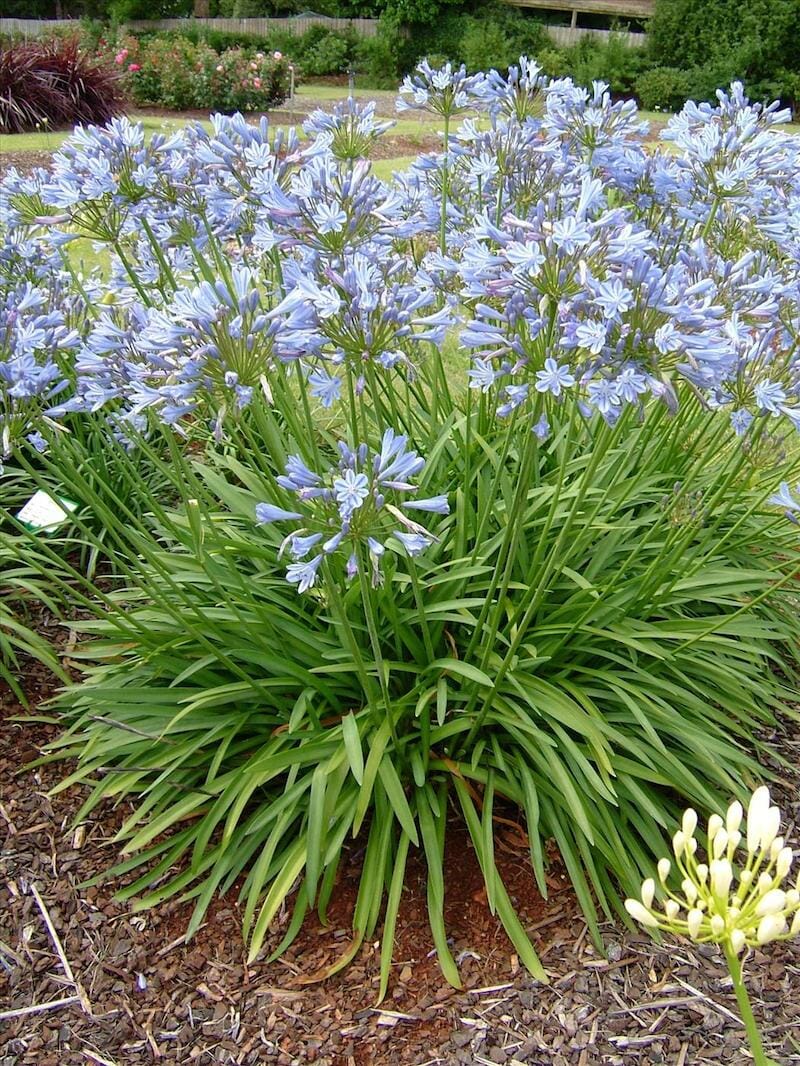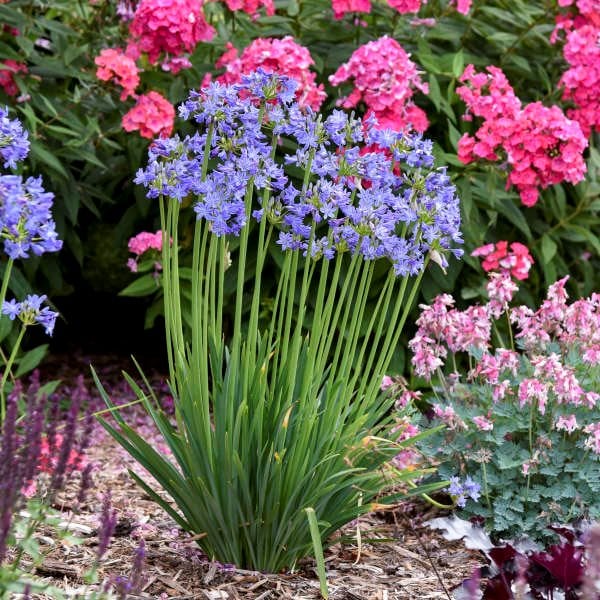Agapanthus Varieties: Picking the most effective for Your Landscape
Agapanthus Varieties: Picking the most effective for Your Landscape
Blog Article
Mastering the Art of Agapanthus Treatment: Essential Steps for Healthy And Balanced Development and Vibrant Flowers
In the world of horticulture, the farming of agapanthus stands as a satisfying venture for those that seek to support these classy blooming plants. With their striking flowers and elegant foliage, agapanthus has recorded the interest of garden enthusiasts worldwide. However, attaining optimal development and vibrant blossoms requires a nuanced technique that includes numerous necessary actions. From selecting the ideal selection to grasping pruning strategies, the journey towards growing thriving agapanthus plants is diverse and holds the crucial to opening the full potential of these agricultural treasures.

Picking the Right Agapanthus Variety

When picking the ideal Agapanthus variety for your yard, think about variables such as environment suitability, flower shade, and development behavior. Furthermore, consider the climate in your region to make sure the Agapanthus selection you pick can grow in your specific conditions. Comprehending the growth behavior of various Agapanthus ranges is essential for proper placement within your yard.
Ideal Growing Problems
Considering the optimal ecological requirements is essential for effective Agapanthus cultivation. Agapanthus thrives in well-draining soil with a slightly acidic to neutral pH degree. When planting, choose a location that gets full sunlight to partial shade. In hotter environments, giving some mid-day color can avoid scorching of the leaves. Agapanthus plants are delicate to chilly temperatures and ought to be shielded from frost during cold weather.
To make certain healthy and balanced development and vibrant flowers, plant Agapanthus light bulbs at a deepness of about 2-4 inches and area them 8-12 inches apart. Mulching around the base of the plants assists retain wetness and reduces weed growth.
Watering and Feeding Tips
Maintaining appropriate moisture levels and supplying essential nutrients are crucial elements in the treatment routine for Agapanthus plants. When it comes to sprinkling Agapanthus, it is crucial to strike a balance. These plants like consistently damp soil however are prone to root rot if overwatered.
Fertilizing Agapanthus is essential for promoting healthy growth and respected blossoms. Use a well balanced plant food, such as a 10-10-10 formula, in the early springtime as new growth arises. Repeat this application every 6-8 weeks throughout the expanding period. Prevent extreme fertilization, as it can bring about rich foliage at the expense of blossoms. Constantly comply with Go Here the manufacturer's directions for proper dilution and application methods. By following these watering and fertilizing pointers, you can ensure your Agapanthus plants flourish and generate vibrant, lasting flowers.
Trimming Methods for Agapanthus
Trimming Agapanthus plants at the suitable times and with correct techniques is crucial for maintaining their health and advertising ideal development and blooming. The excellent time to prune Agapanthus is in late winter season or very early spring before brand-new growth arises. Start by removing any type of dead or yellowing fallen leaves near the base of the plant. Cut them as short as possible without harming the arising shoots.
Deadheading spent flowers can additionally redirect the plant's energy into generating more flowers rather than setting seeds. If you desire to collect seeds for breeding, leave some flowers to fully grown and completely dry on the plant.
Bear in mind to utilize clean, sharp tools to make specific cuts and decrease the published here risk of presenting conditions. Agapanthus. Normal pruning will assist keep your Agapanthus looking neat and healthy and balanced while making certain a bountiful display of stunning blossoms
Dealing With Typical Bugs and Conditions
After making sure proper trimming strategies for Agapanthus, it is necessary to attend to common insects and diseases that can influence the wellness and vigor of these plants. Agapanthus plants are generally durable but can still drop victim to certain issues. One typical parasite that impacts Agapanthus is the Agapanthus gall midget. This small, orange fly lays its eggs in the foliage, leading to distorted growth and flower buds that fail to open. To combat this bug, trim and destroy any kind of affected plant components and consider utilizing insecticidal soap.
Furthermore, Agapanthus plants can suffer from origin Read Full Report rot if they are grown in badly draining soil. By being watchful and taking timely activity against conditions and pests, you can assist your Agapanthus plants grow and create vibrant blooms. Agapanthus.

Verdict
In conclusion, grasping the art of agapanthus care involves picking the best selection, offering perfect growing conditions, correct watering and feeding, proper pruning techniques, and resolving common insects and illness. By adhering to these vital steps, you can ensure healthy and balanced growth and vibrant blossoms for your agapanthus plants. Keep in mind to regularly keep track of and keep your plants to promote their total health and durability.
To ensure healthy development and lively flowers, plant Agapanthus light bulbs at a deepness of about 2-4 inches and room them 8-12 inches apart. By adhering to these watering and fertilizing pointers, you can ensure your Agapanthus plants grow and create vivid, long-lasting blooms.
One common pest that affects Agapanthus is the Agapanthus gall midge. Additionally, Agapanthus plants can endure from root rot if they are grown in badly draining dirt. By following these vital steps, you can guarantee healthy growth and vivid blooms for your agapanthus plants.
Report this page